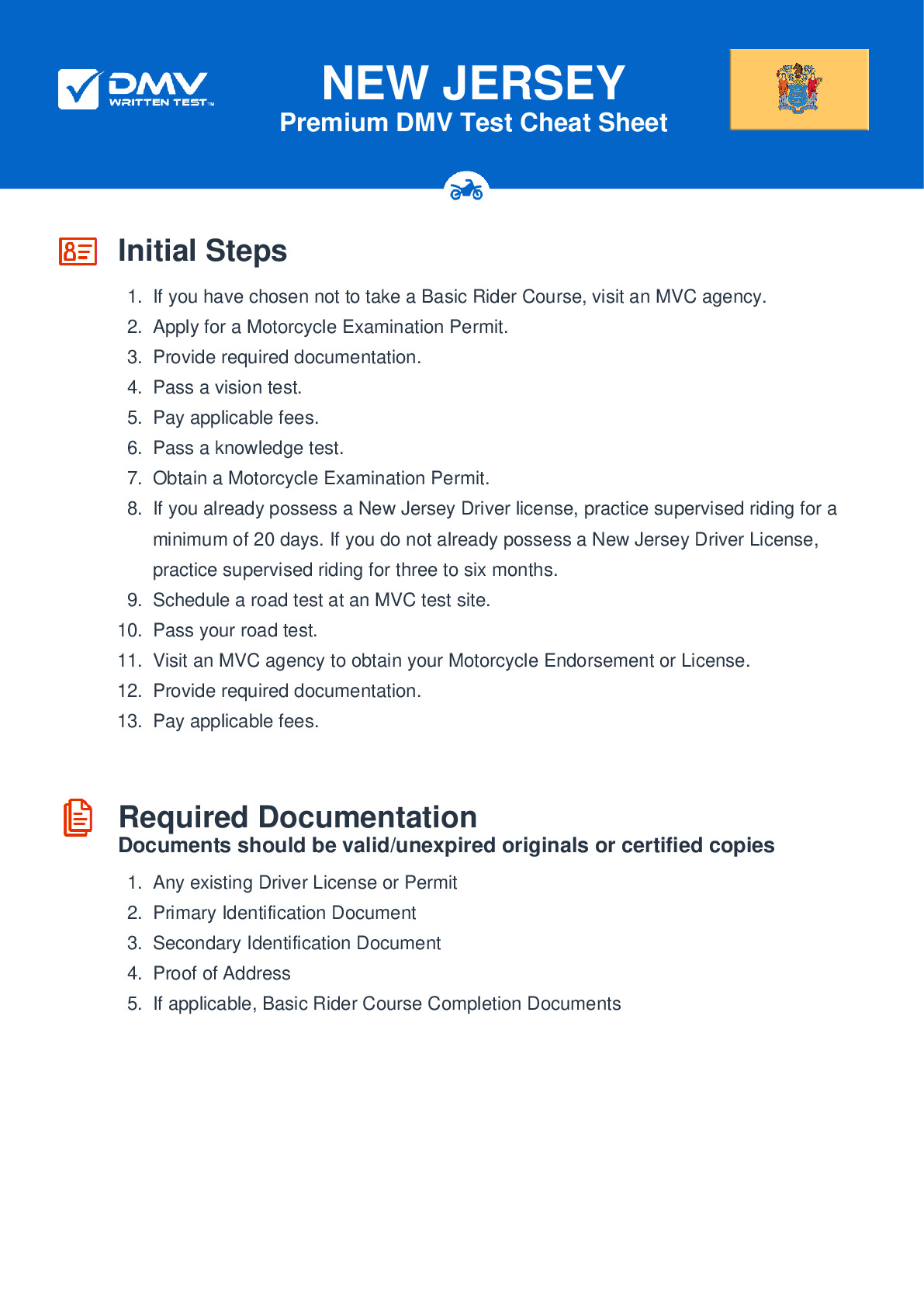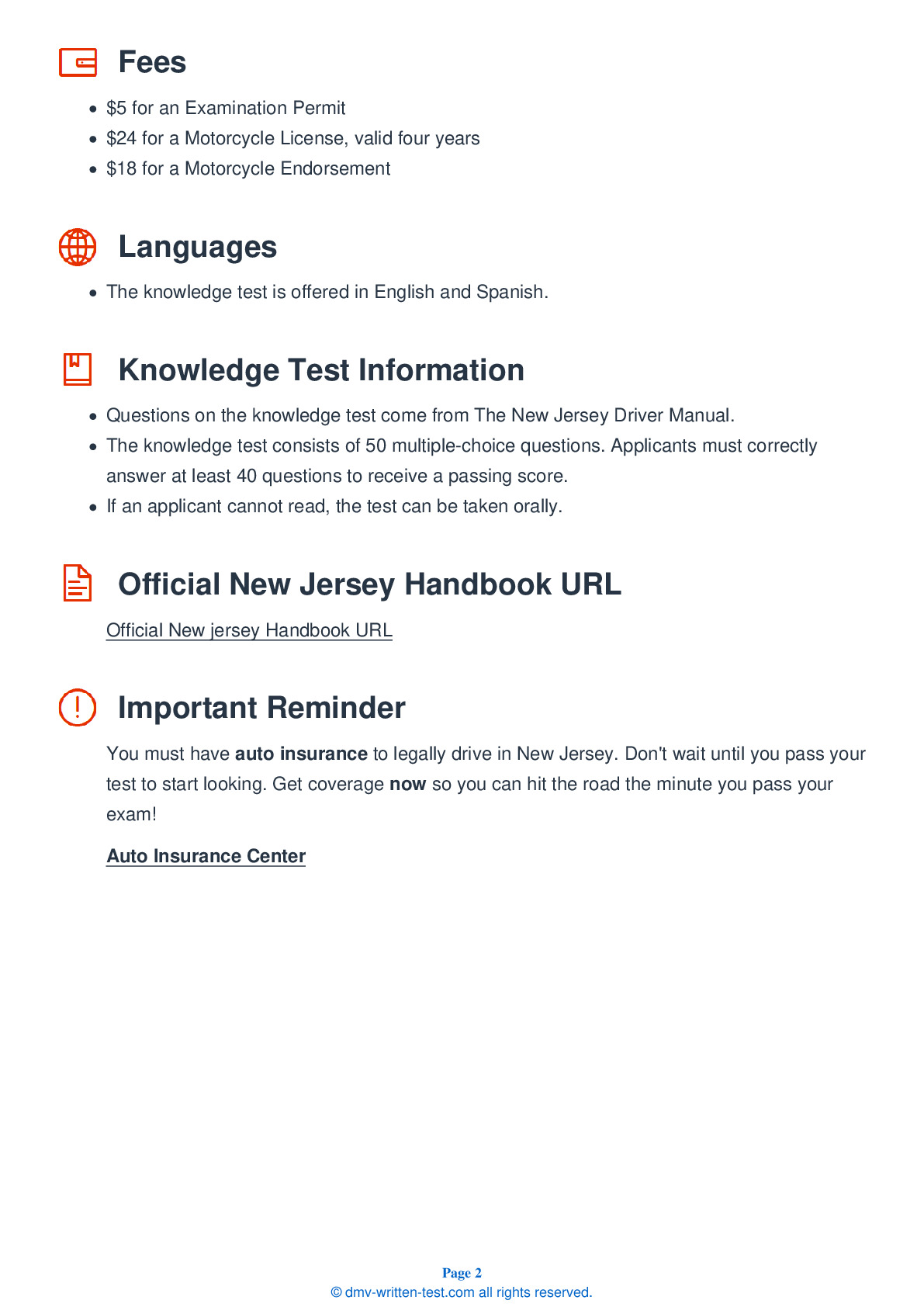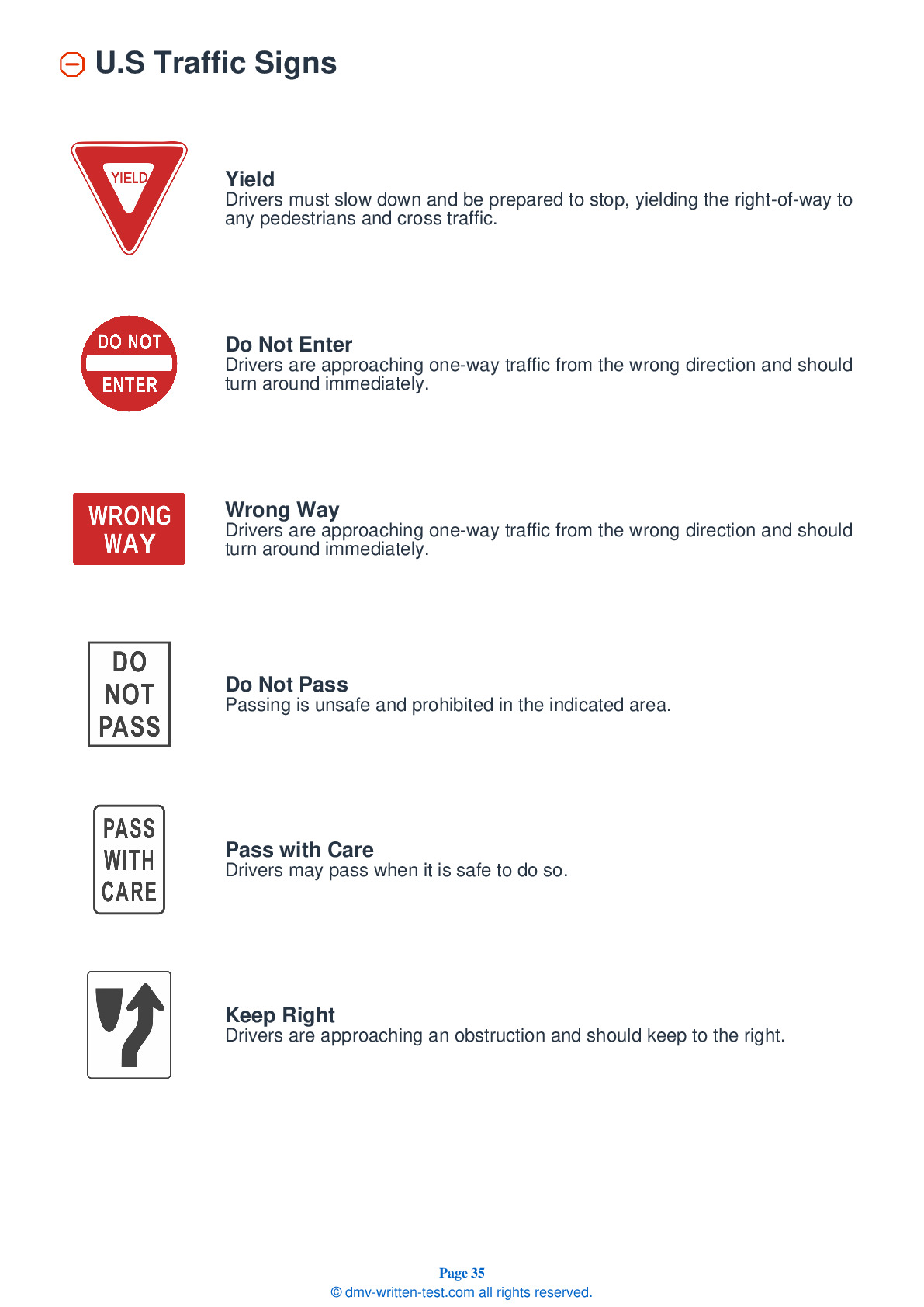2025 New Jersey Motorcycle Permit Test 7
The following questions are from real DMV written motorcycle permit tests. These are some of the actual permit questions you will face in New Jersey when getting your motorcycle learners permit. Each motorcycle theory practice test question has three answer choices. Select one answer for each question and select "grade this section." You can find this button at the bottom of the drivers license quiz. For a complete list of questions and answers for New Jersey please visit https://cheat-sheets.dmv-written-test.com/en/new-jersey/motorcycle.
Number of Tests
Number of Question
Passing Score
8. A motorcyclist is well-protected if they are wearing:
Explanation
For your protection while riding, it is best to wear a jacket and pants that cover your arms and legs completely. Boots or shoes should be tall and sturdy enough to cover and support your ankles. Footwear should have low heels that will not catch on the foot pegs or rough road surfaces. Gloves made of leather or another durable material will help protect your hands in the event of a crash while providing you with an improved grip on the controls.
10. If you are not traveling slowly enough when shifting into a lower gear, the:
Explanation
If you are not riding slowly enough when shifting into a lower gear, the motorcycle will lurch and the rear wheel may skid.
11. When going through a turn on a motorcycle, you should:
Explanation
When making a turn, you should look through the turn to where you want to go. Turn just your head, not your shoulders, and keep your eyes level with the horizon.
12. When entering a curve, a group should:
Explanation
While riding in a staggered formation is usually best, a group should switch into a single-file formation when turning, taking curves, or entering or exiting a highway.
13. On a slippery surface, you should not:
Explanation
To ride safely on a slippery surface, you should use both brakes when slowing or stopping, reduce your speed, and avoid making sudden moves. Be alert to oily areas, dirt, gravel, shaded areas, and bridges, as these surfaces are more likely to be slippery than others.
14. To reduce your reaction time, you should:
Explanation




